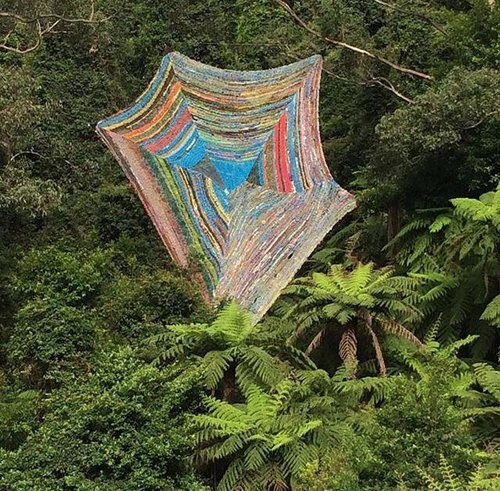The decorative arts are arts or crafts of objects that are both beautiful and functional.
Chinese antique brass carved dragon and phoenix teapot Qing dynasty.
Polychrome female face from Vulci (Tuscany), now in the National Etruscan Museum of Villa Giulia in Rome. The find dates back to the 1st century. B.C. @Maria Enrica Ceccarelli
Read more…You need to be a member of Moondance to add comments!
Comments are closed.
Sycamore stunner:…

KEVINA-JO SMITH: EXPLORING THE MAGIC AND MAYHEM OF…
Roger Capron was an influential French ceramicist, known for both his tiled tables and his use of recurring motifs such as…
I just got these dandelions finished before most of those in my area went to seed. I do love the clocks, but they are so…
"Quilt" Tessellated Landscape Series _043 " by Gloria Loughman, an acclaimed Australian quilt artist, author, and…
Ann Brauer (American, born 1949)
"Autumnus", (2023) Detail. Textile/art quilt 30 x 60…
“Lost Weave 6”, Wool and silk, 98.4 x 118.1 in (250 x 300 cm).…
"Meadow Waltz", by Sanna Rahola, a Finnish-born, Canadian fiber artist and educator, is a vibrant wall hanging crafted…
Betty Busby
A textile artist based in New Mexico, uses fiber textile art and quilting to explore scientific…

Harry Clarke (1889-1931) - Stained…
Nayarit Culture
Unknown Artist
Date: 100 BCE-250 CE
Medium: Polychrome painted ceramic
Object…
The Seated Woman of Çatalhöyük (also Çatal Höyük) is a baked-clay, nude female form seated between…
Comments
Textile artist Nancy Nicholson, cat & bird embroidery
Cookie jar decorated with iris flowers (commonly known as lilies). Circa 1900.
François-Théodore Legras
Embroidery artist Laura Dalla Vecchia ( IG: @levezaart ) creates amazing art. She embroiders onto leaves! This one is a shimmering humming bird on a skeletonized leaf.
‘’a midsummer night’s dream’’
A stunning expression of heart and soul by Andrea Zanatelli
Georges Fouquet, pendant in the form of a wisteria branch, (1908-10), Paris. Via the Rijksmuseum, Amsterdam.
A Beautiful Brocade Textile.
Saffavid Persia (Iran) 1650 AD
Stunning TIFFANY window from 1899 with parakeets and gold fish bowl.
Museum of Fine Arts USA
Tiffany glass refers to the many and varied types of glass developed and produced from 1878 to 1929–1930 at the Tiffany Studios in New York City, by Louis Comfort Tiffany and a team of other designers, including Clara Driscoll,Agnes F. Northrop, and Frederick Wilson. Louis Comfort Tiffany (1848–1933) was an American artist who was a leader of the Art Nouveau movement. He was known for his work in stained glass, jewelry, pottery, textiles, and metalwork.
Mandy Pattullo, UK textile artist and printmaker who upcycles old quilts and other materials.
-
1
-
2
-
3
of 3 Next